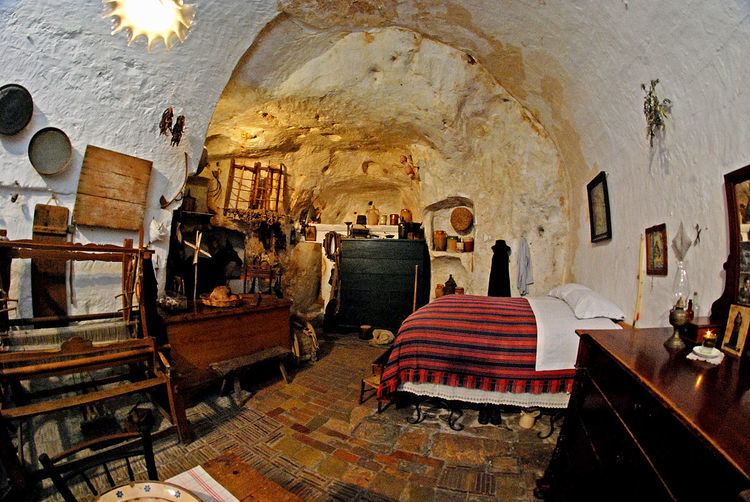 | ||
Underground living refers simply to living below the ground's surface, whether in naturally occurring caves or in built structures.
Contents
Underground dwellings are an alternative to traditionally built above-ground dwellings for some home seekers, especially those who are looking to minimize their negative impact on the environment. Some of the advantages of underground houses include resistance to severe weather, quiet living space, an unobtrusive presence in the surrounding landscape, and a nearly constant interior temperature due to the natural insulating properties of the surrounding earth. The greatest appeal for most is the energy efficiency and environmental friendliness of underground dwellings. When combined with renewable energy sources, energy cost can be greatly reduced. Initial building costs are often low, as underground building is largely subtractive rather than additive, and because the natural materials displaced by the construction can be recycled as building materials. However, underground living does have certain disadvantages; such as the potential for flooding, which in some cases may require special pumping systems to be installed.
Underground living has been a feature of fiction, such as the hobbit holes of the Shire as described in the stories of J. R. R. Tolkien and The Underground City by Jules Verne. It is also the preferred mode of housing to communities in such extreme environments as Italy's Sassi di Matera, Australia's Coober Pedy, Berber caves as those in Matmâta, Tunisia, and even Amundsen–Scott South Pole Station. Underground living is even being considered for the design of a future base on Mars. With today's technologies one can direct natural light into living spaces with light tubes. Factories and office buildings can benefit from underground facilities for many of the same reasons as underground dwellings such as noise abatement, energy use, security, and community aesthetics.
Often, underground living structures are not entirely underground, typically they can be exposed on one side when built into a hill. This exposure can significantly improve interior lighting, although at the expense of greater exposure to the elements.
History
There is only written documentation of Scythian and German subterranean dwellings. Remnants have been found in Switzerland, Meklenburg and southern Bavaria: "They had a round shape with a kettle-like widening at the bottom, from eleven to fifteen metres in diameter, and from two to four metres in depth".
Construction methods
In parts of rural Australia, subterranean houses are built in a manner similar to prairie dog holes. There is a "chimney" placed higher than ground-level and a lower, ground-level, entrance. This orientation causes a continuous breeze throughout the house, reducing or eliminating the need for air conditioning.
Structures
There are various ways to develop structures for underground living.
